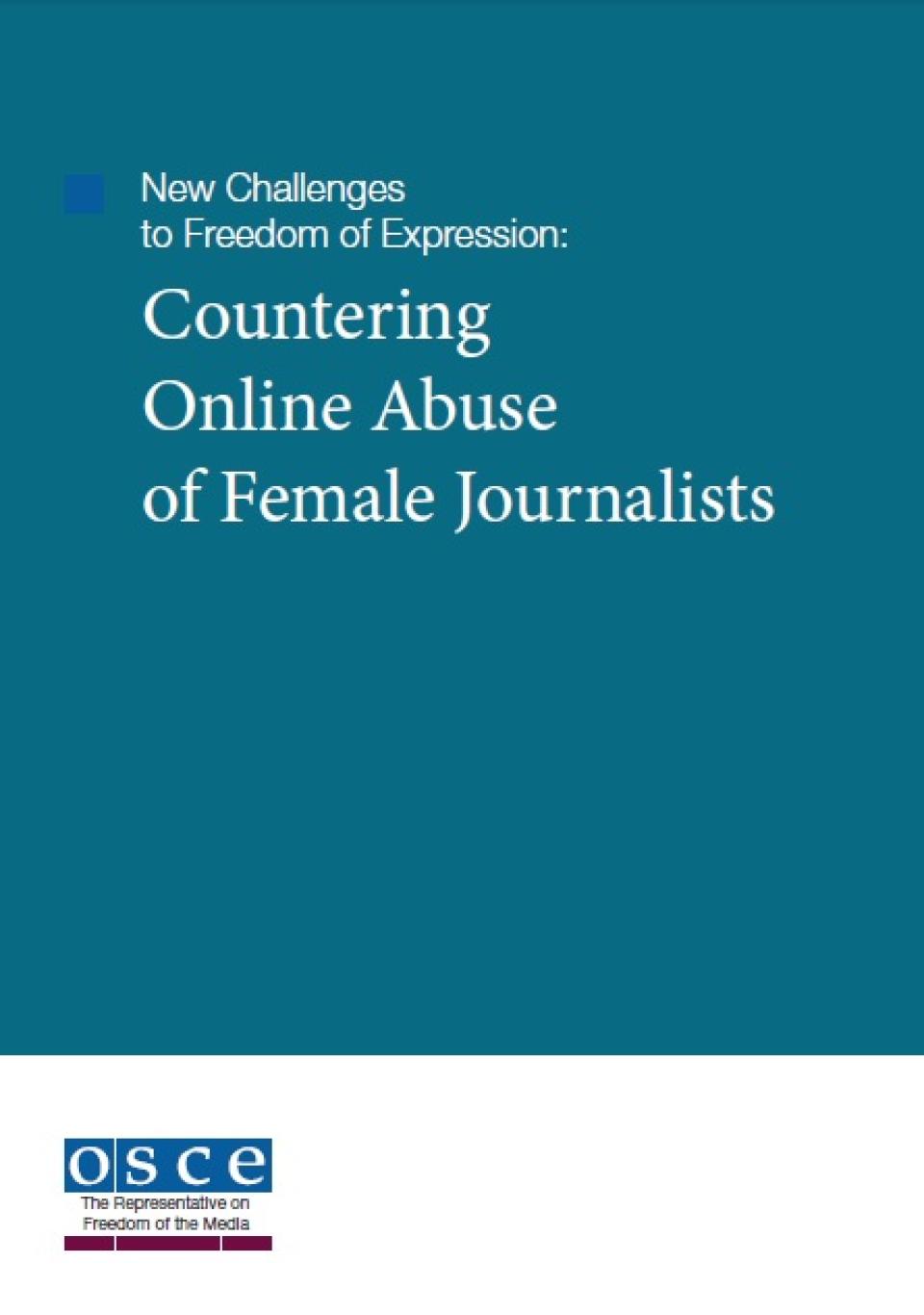
Online media today allows for the fast flow of information and the public’s active participation in sharing ideas, news and insight. An open, free and safe Internet is essential for public debate and free flow of information and therefore should be duly protected.
At the same time, the digitalization of media has made journalists and other online voices more vulnerable to threats and intimidation of different shapes and forms.
Journalists’ safety is a precondition for free speech and free media. Dealing with and minimizing threats to journalists is an essential component of the OSCE participating States’ commitment to the protection and safety of journalists.
Female journalists, bloggers and other media actors are disproportionally experiencing gender‑related threats, harassment and intimidation on the internet which has a direct impact on their safety and future online activities.
This report provides recommendations by the OSCE Representative on Freedom of the Media, on how participating States, media organizations and intermediaries can assist in ensuring that female journalists and media actors can work without fear and exercise their human right to freedom of expression.
The publication also features a number of essays from prominent journalists, academics and organizations on their experiences dealing with online threats against female journalists.
Overall, this publication aims to clarify the complexity of online abuse of female journalists and will be used as guidance for action to counter the phenomenon and replace it with an internet culture and environment in which everyone feels safe to share and receive information and opinions.
Contents
Foreword…………………………………………………….. 1
Dunja Mijatović, OSCE Representative on Freedom of the Media
Recommendations………………………………………………………….. 5
Essays………………………………………………………….. 8
1. The media cannot be truly free if women’s voices are silenced……………………… 8
By Zorana Antonijevic, OSCE Gender Section
2. ‘Women that talk too much need to get raped’: What men are really saying when they abuse women online…………………………………………………….. 13
By Caroline Criado‑Perez
3. Shame, shock and speech injuries: Online harassment against journalists in Norway………………………………………………………….. 17
By Aina Landsverk Hagen
4. In Solidarity With ‘The Pantyless Journalist’: How Journalists In The Bahamas Stood Up To The Cyberbullies……………………………………………… 21
By Alison Bethel McKenzie
5. Beyond anecdotal reports: Some hard data about the online abuse
of women journalists………………………………………………………….. 27
By Elisa Lees Munoz
6. More platforms, less freedom: How new media reproduce old patriarchal structures………………………………………………………….. 31
By Snježana Milivojević
7. Laws, Norms and Block Bots: A Multifaceted Approach to Combatting Online Abuse………………………………………………………….. 35
By Courtney C. Radsch
8. Protecting Female Journalists Online: An International Human Rights Perspective………………………………………………………….. 41
By Sejal Parmar
9. Online abuse of women journalists: Towards an Evidence‑based Approach to Prevention and Intervention……………………………………………………… 47
By Elana Newman, Susan Drevo, Bradley Brummel, Gavin Rees and Bruce Shapiro at The Dart Center for Journalism and Trauma
Year of publication
- 5527 views





Add new comment